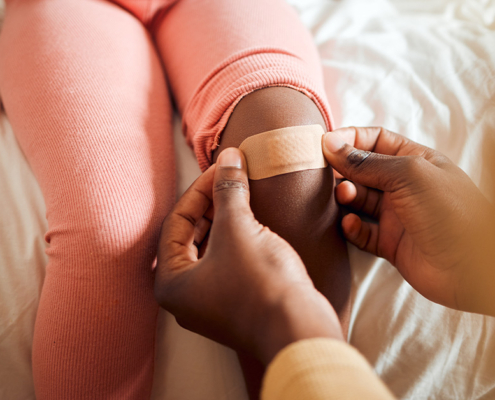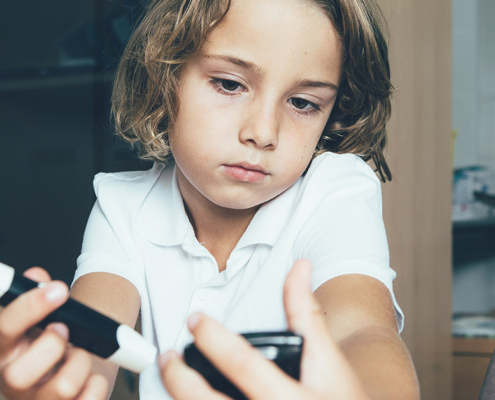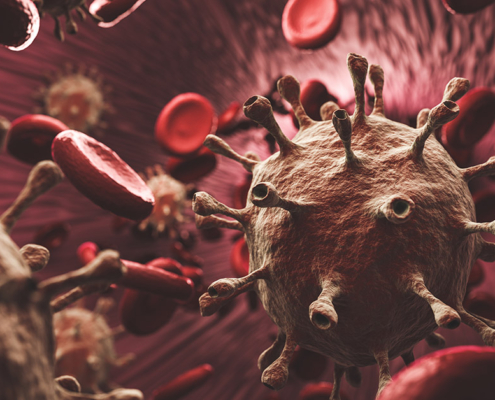A Father’s Perspective on Childhood Diabetes
By Sean Harrison
Unexpected Diagnosis of Type 1 Diabetes
As a dad, one who may have been a little rebellious in his youth, there are a lot of things I expected I would have to face having two boys. The normal things, bumps, bruises, backtalk, reassuring them things were going to be alright, school, all the normal stuff. Hearing my youngest son has Childhood Diabetes was not on my list, but here we are.
Before I get into the details, I think context is important. My son is 11 (the normal age range for contracting Type 1 diabetes is 8 to 14, Type 1 is also known as juvenile diabetes), he’s active, he eats well, his weight is in the correct range, and he’s doing fine in school. By some accounts, mine and his mom’s, he’s doing excellent, he’s helpful around the house, does his own laundry (with a little encouragement and reminders), likes to cook, takes care of his pets, and is great with yard work or just being a helping hand.
About a month, maybe six weeks, prior to writing this, my son started drinking a lot of water. When I say a lot, I mean a lot, a gallon or more per day, it was like he could not get enough. We wrote that up to dry weather (we live in the north, in a cold climate) and he was going through a growth spurt. Snowboarding season had just ended for him, spring was starting to arrive and we were doing some yard work, this was on a Sunday. Those details are so important because he was able to do everything an 11-year-old should be able to do. Monday comes along and my wife and I are drinking coffee and talking about the week. That conversation almost always revolves around what the boys are doing for the week.
We started discussing our youngest (the 11 year old) and his increased water consumption and a couple of other little things, like peeing a lot, and some minor mood swings every now and then. Like I do often, when I’m curious and want to know the answer to something, I Googled it. Top result, Type 1 Diabetes. A brief side story. I don’t know if all moms are like this, but my wife has an intuition like nothing I’ve ever seen, kind of scary what she knows before it even happens.
It was less than a week before this Monday morning Google episode that she said, during a conversation “I sure hope he does not have diabetes”. This was pretty much a passing statement; no further discussion was had. Back to the story. Clicking on a link from Mayo Clinic and right there at the top of the list, many of the things we had seen him doing. I show my wife and after a brief read, she says “I’m going to make an appointment with his doctor.”
Rapid Changes and Hospitalization
Not much later that morning, we needed to get the boys to school, she called the doctors office. Speaking with the receptionist, we owe a lot to this lady, she says she wants to make an appointment for our son and like normal, the doctors are busy and the only open appointments are a week or two out. The receptionist asks “is there anything in particular you want to see the doctor for” my wife responds with “well, we would like to talk to him about diabetes”, the tone of the conversation changed and she had an appointment within the next two hours. From here things went crazy and moved at the speed of light.
After a brief visit with the doctor, enough time to draw a little blood, see the results and say “you need to take him to the emergency room.” What I’m about to write requires a little information, if you are not familiar with blood glucose levels (BG), I know I sure wasn’t before this. According to the Center for Disease Control (CDC) the normal BG range is 99-140. There is a lot of range and fluctuation in these numbers: fasting, exercise, the food you eat, sickness, etc. After a quick blood draw and test, there was no question he had Type 1 diabetes, his number came back at 715. The old cliche don’t judge a book by its cover came to mind, he looked and acted completely fine.
Embracing the Journey of Type 1 Diabetes
The nurses and doctors were stunned he had zero symptoms, if not for the test, we would have never known. The next 24 hours were a blur, spent in the hospital. The learning curve was very steep, the support and resources were amazing, that said, it was still overwhelming. One positive thing, my son owned this, he was amazing at all the shots, nurses and doctors poking him, asking him questions, none of this phased him, he embraced what was happening, listened and learned to the best of his ability. There is a lot of math involved! We were scared, but ready to go home. Leaving such a great support system is never easy. There’s more to this story, that’s for another article. For now, I want to address some very basic things.
Genetics and Environmental Triggers
If you are a parent reading this, know that there is nothing you did, and a very small chance you passed Type 1 diabetes on in your DNA. If you are a child/minor reading this, there is also nothing you did or could have done to prevent this. According to the National Institute of Diabetes and Digestive and Kidney Diseases, and what I have learned, while genes can play a role, environmental triggers such as viruses play an even bigger role.
Seeking Support and Moving Forward
For both of you know this, you will get through this, it’s not easy and you will need to prioritize learning and taking care of this to the top of your list. If the hospital or doctors give you a resource(s), take it, follow up with the resource(s), there are a lot of them out there. If you have friends, especially other parents who may have a child with Type 1 diabetes, talk with them. Understanding 1) the reassurance from them that you will get through this and 2) how this is going to fit into your lives, the practical application, and things will suddenly start getting better. Little by little each day will improve. Here’s a saying that came from the Endocrinologist “shape the Type 1 diabetes around his life and not his life around the Type 1 diabetes”.
Wrapping this article up, there are more articles to follow. I can’t thank the massive team of medical professionals enough that have helped us get to where we are, which is the very early stages. The nurses at his school have gone above and beyond to make this new way of life as easy as possible. There’s a lot more to say about them! And finally my wife, she is a rockstar, sleepless nights, phone calls, meetings, appointments, tracking and the list goes on. Through all that she has kept her energy up and her mood positive.
Finally, this is not intended to be an educational article, it’s my journey and thoughts. There are a lot of great medical resources available, podcasts and articles from parents who are way ahead of us in this journey, so if you find yourself in this most unfortunate situation, have your own Google episode. Have comments or questions, please add them below and I will respond as quickly as I can.
First Response Training International offers courses in First-aid, CPR, AED, Workplace Safety, and more. To learn more about our classes and curriculum visit our Training Programs page. If you are interested in becoming a First Response CPR/First-aid Instructor, visit our Becoming an Instructor page. Thank you for reading and sharing this blog.












Laisser un commentaire
Voulez-vous participer à la discussion ?N'hésitez pas à contribuer !